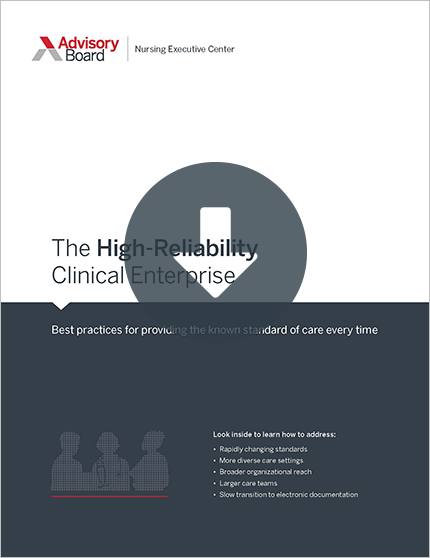Auto logout in seconds.
Continue LogoutA CDC report released last week showed U.S. progress on stemming bloodstream Staphylococcus aureus (staph) infections slowed from 2012 to 2017, prompting CDC to urge health care providers to recommit to using infection control recommendations..
Report details
For the report, CDC reviewed electronic health record data from more than 400 acute-care hospitals and population-based surveillance data on methicillin-sensitive staph aureus (MSSA) and methicillin-resistant staph aureus (MRSA) bloodstream infections. About half of staph bacteria have developed resistance to methicillin antibiotics.
Staph infection rates have held steady since 2012
According to the report, rates of bloodstream staph infections diagnosed in hospitals declined from 2005 to 2013, largely driven by an average 17.1% decline in the rate of health care-acquired MRSA each year from 2005 to 2012. In addition, the rate of community-onset MRSA declined by an average rate of 6.9% each year from 2005 to 2016.
But CDC found that overall staph infection rates have remained relatively unchanged since 2012. According to the report, the rate of health care-acquired MRSA infections declined by an average of 7.3% each year from 2012 to 2017. However, rates of health care-acquired MSSA infections remained relatively stable from 2005 to 2017, and rates of community-onset MSSA increased by an average of 3.9% annually from 2012 to 2017. According to the report, more than 119,000 people in the United States were diagnosed with bloodstream staph infections in 2017, and nearly 20,000 of those individuals died.
CDC said the U.S. opioid epidemic might have contributed to the rise in community-onset staph infections. Ann Schuchat, CDC's principal deputy director, said 9% of invasive MRSA infections in 2016 occurred in individuals who used intravenous drugs, up from 4% in 2011. She said, "Health care providers should be aware that the people who inject drugs are 16 times more likely to develop a serious staph infection than those who do not."
CDC said the stalled progress in health care-acquired staph infections likely resulted from providers not using recommended infection control procedures, such as using gloves and gowns and continually reviewing a facility's infection control data. "We think that while individual hospitals, health care facilities, communities, and certainly the [Veterans Affairs] system may be continuing to make progress, the national plateau that we are seeing probably stems from dropping off in using the intensive [CDC infection control] recommendations," Schuchat said.
CDC urges providers to recommit to reducing staph infections—and touts VA centers as an example
CDC urged health care providers to recommit to reducing staph infections. CDC Director Robert Redfield in a release said, "Staph infections are a serious threat and can be deadly." He added, "U.S. hospitals have made significant progress, but this report tells us that all staph infections must remain a prevention priority for health care providers."
Schuchat said health care providers can look to VA medical centers as an example of how to curb staph infections. According to a separate report released last week, 18 VA medical centers in 2005 launched a MRSA infection prevention pilot program that included various strategies, including screening patients for nasal MRSA carriage upon admission and using certain precautions for patients found to be carrying MRSA. The program expanded to all 153 VA medical centers by October 2007.
According to the report, the overall rate of staph infections at VA medical centers declined by 43% from 2005 to 2017, and was largely driven by a 55% decline in the MRSA infection rate (Bracho-Sanchez, CNN, 3/5; Brooks, Medscape, 3/6; Ross Johnson, Modern Healthcare, 3/5).
Want to see how your hospital stacks up? Use the Hospital Benchmark Generator
With our Hospital Benchmark Generator, you get instant access to Medicare benchmarks for financial, operational, and quality data without the hassle. Simply choose your desired cohort and view the benchmarks (in deciles) with your organization's data displayed in red.
Don't miss out on the latest Advisory Board insights
Create your free account to access 1 resource, including the latest research and webinars.
Want access without creating an account?
You have 1 free members-only resource remaining this month.
1 free members-only resources remaining
1 free members-only resources remaining
You've reached your limit of free insights
Become a member to access all of Advisory Board's resources, events, and experts
Never miss out on the latest innovative health care content tailored to you.
Benefits include:
You've reached your limit of free insights
Become a member to access all of Advisory Board's resources, events, and experts
Never miss out on the latest innovative health care content tailored to you.
Benefits include:
This content is available through your Curated Research partnership with Advisory Board. Click on ‘view this resource’ to read the full piece
Email ask@advisory.com to learn more
Click on ‘Become a Member’ to learn about the benefits of a Full-Access partnership with Advisory Board
Never miss out on the latest innovative health care content tailored to you.
Benefits Include:
This is for members only. Learn more.
Click on ‘Become a Member’ to learn about the benefits of a Full-Access partnership with Advisory Board
Never miss out on the latest innovative health care content tailored to you.

